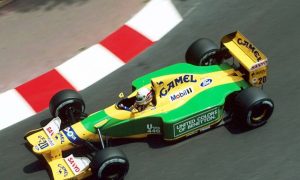We tend to take the sun and the moon for granted and then, once in a blue moon, there’s a total eclipse and we’re all looking up at the sky. Twelve months ago we had a similar situation in Formula One, as for the first time in ages, thanks to the new technical regulations, fuel and oil was actually a topic for discussion. Cars would only be allowed 100 kilos of fuel per race, leading to Luca di Montezemolo describing F1 as a sport for taxi drivers (shortly before the Ferrari management called him a taxi of his own) and with only five engines per driver per season, the oil and other lubricants were going to have to work harder to protect all that precious metal.
At the time, the Ferrari message was all about how the fact that engine and chassis were both manufactured in house would give the Italian legends an advantage over other teams, thus leading to a change of fortunes for the Maranello marque. The fact that Shell had been supplying the prancing horse since the world was seen in black and white was clearly a further bonus. And yet, it just didn’t happen in 2014.
We did work very hard over the course of the year to be more competitive, but it just wasn’t enough.”
“It was a very disappointing season,” agrees Guy Lovett, Shell’s Technology Manager for Ferrari. “There was a lot of hope and expectation this time last year, which wasn’t realised for well documented reasons. We did work very hard over the course of the year to be more competitive, but it just wasn’t enough.”
However, it could be a different story this time: “Over the winter, we made significant changes to the way we work within Shell on the F1 project and also on the way we interact with Ferrari. They too have made significant changes within their organisation, aimed at being more efficient and effective.
“We are starting to see the benefits of that, including some promising results from winter testing and some encouraging data from the dynamometers in Maranello and on the Shell test beds. However, we’ll only know if it’s enough when we get to Melbourne.”
The 2014 Ferrari power unit was pretty reliable, but in this game, reliability can often be a way to make something slow.
“You have to be reliable enough to finish, but perhaps we were a bit too conservative,” admits Lovett. “That was the situation in terms of fuels and oils at the start of the season, but during the year, we made some significant steps, introducing four new fuels and that delivered some aggressive performance upgrades. We now have a better understanding of the V6 engine’s appetite for various formulations and have been able to make some big steps in the run up to this season. However, to close all of the gap to Mercedes in the short term is probably too much to expect.”
Fuel is the obvious performance driver, but even the lubricants have a part to play in helping ensure the power units complete the required mileage throughout a season; a task which is getting more and more difficult.
“Last year we went from 8 to 5 power units over 19 races and this year, we are down to 4 power units over potentially 20 races. It’s a big stretch and a tough challenge, particularly on the lubricant side. Getting lubricants to provide the necessary performance balanced with the optimum level of protection is the difficult part. This year, the fact there is a certain amount of engine development allowed in-season adds to the difficulty, as we are chasing a moving target.”
Lovett has worked with the Italian team for several years and reckons the talk of change is not just lip service…
“Among the Ferrari people I work with at the tests, there was definitely a different atmosphere compared to the end of 2014. There’s a lot more positivity and people are smiling again. In Maranello there have been subtle changes and the collaboration, information sharing and openness has improved over the winter. The desire to win is the same as ever!”
In 2014, Ferrari worked its way through three team principals and rooted out what it reckoned was its deadwood. But the highest profile change was replacing the mercurial yet temperamental Fernando Alonso with the talented Mr. Vettel. Lovett believes the change might be just what the doctor ordered.
“I’ve met Sebastian a couple of times now, speaking with him at the Barcelona test. I was struck by how friendly and humble he is, considering he’s a four-time world champion! He is really interested in the technology and spent time with me and my colleagues in the Shell trackside laboratory in Barcelona. I talked him through what we were doing on the fuels and oils side and also the work we do trackside for Ferrari. He has a very nice and friendly character that is really helping the team. He’s a proven winner and brings with him a desire for success and a collaborative approach, which fits in nicely with the way the team has changed.”
Who knows, while Shell protects and powers the engine, maybe Vettel will be the factor that really oils the wheels of the Scuderia.
Click here for the gallery from day four of the final test
Keep up to date with all the F1 news via Facebook and Twitter









